For structural engineers and architects, every aspect of building and construction projects must be planned down to the finest detail. There is much to consider for design, materials and more. As of late, more structural engineers and architects pay more attention to the energy efficiency of structures.
Building and construction projects must adhere to certain energy standards in today’s world. Green energy, technology and construction practices are now commonplace for structural engineers and architects. To meet these goals, the right building and construction materials make a world of a difference.
One hurdle that structural engineers and architects address in their designs is the phenomenon of thermal bridging. To effectively design energy-efficient buildings, thermal bridging must be minimized using thermal break material to reduce energy transfer, working as an excellent thermal bridging solution.
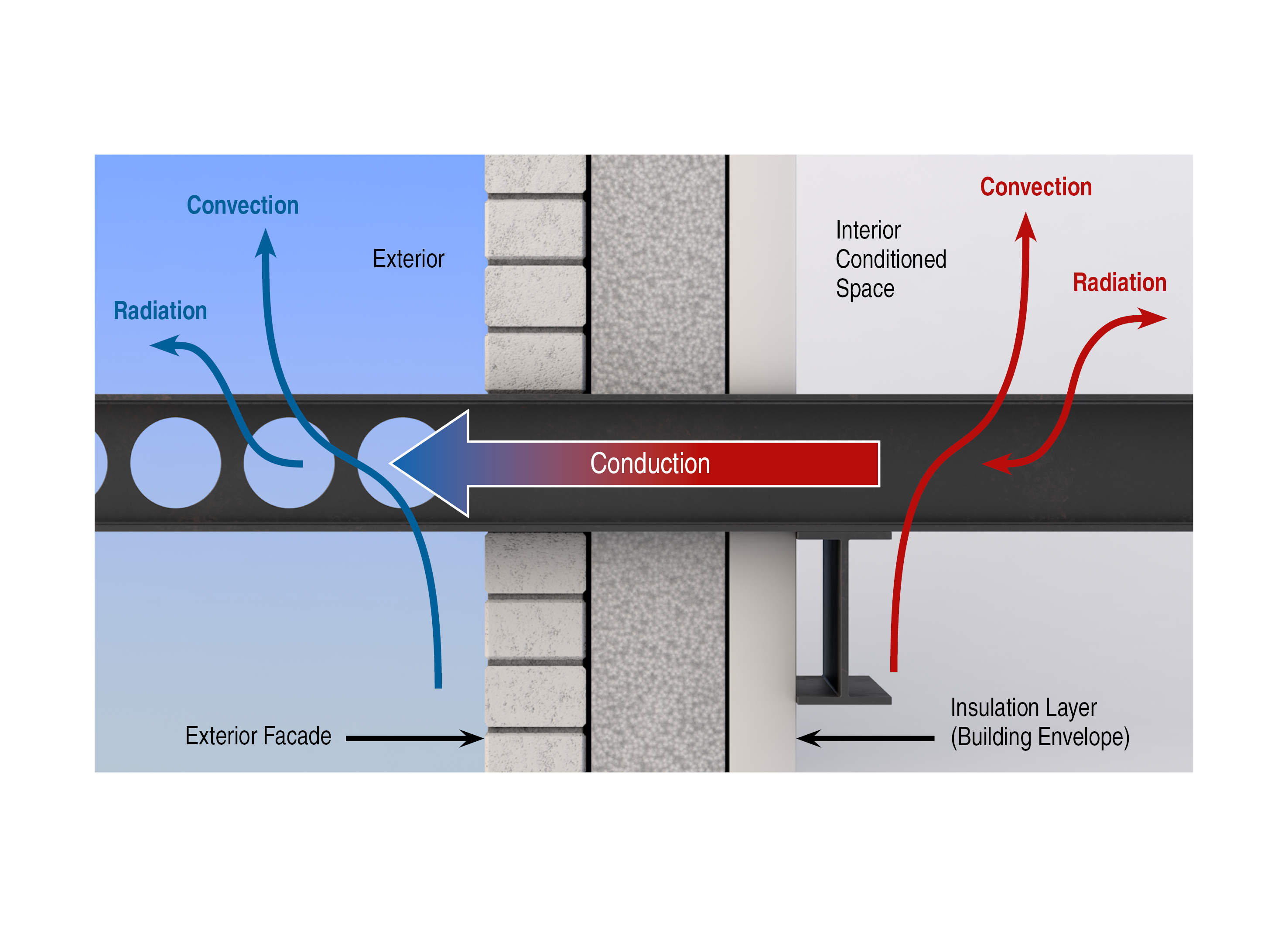
An Introduction to Thermal Bridging
Before we discuss the best thermal break material, it’s important to gain an understanding of the phenomena at play. Thermal bridging is a complex challenge for engineers and architects, but the right thermal bridging solution can greatly improve the flow of energy transfer.
By definition, thermal bridging is a phenomenon where conductive materials provide a conduit or “bridge” for energy to transfer across a thermal barrier. If you imagine a heated office building during a cold winter, the steel structures of the office building act as a vessel for the warm air to escape to the colder outdoors.
Internal and external heat will find the path of least resistance and transfer to the colder side. Thermal bridging like this results in energy loss and potential condensation, which also means that the building requires more energy to maintain a comfortable room temperature.
In essence, nearly one-third of a building’s energy can be lost through thermal bridges in steel structures absent of thermal break material.
How to Prevent Thermal Bridging
Now that we can identify the problem, what are some potential thermal bridging solutions? How can structural engineers and architects prevent thermal bridging in their designs?
To interrupt the flow of heat, structural engineers and architects use thermal insulation as a thermal bridging solution. Designed with energy efficiency in mind, thermal break materials are meant to keep heat where it is supposed to be, whether that be indoors or outdoors.
However, simply installing a thermal break plate between steel connections is not the most efficient way to prevent thermal bridging. A complete structural thermal break solution addresses heat flow at all points throughout the connection. Remember, heat will always travel the path of least resistance.
While the steel beams themselves may be separated by a thermal break plate, heat can still transfer at any point where there is steel-to-steel contact. A complete solution utilizes thermal insulation material at every point of connection to maximize energy-saving results. A holistic thermal bridging solution is best to reach the energy standards engineers and architects strive for.
How does a complete thermal bridging solution work when coupled with the best thermal break material?
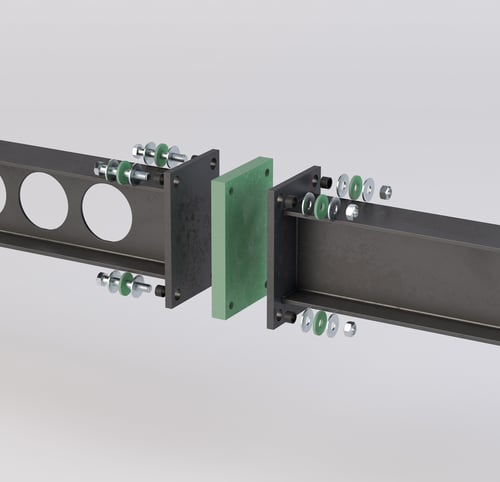
What Is the Best Thermal Break Material?
In truth, the makeup of thermal break material differs. Depending on the application, some are suited better than others. For steel connections, cold storage and more, Fabreeka hosts an impressive lineup of thermal bridging solutions.
Fabreeka’s structural thermal break material proves to be a trusted, industry-specified thermal bridging solution. In our free brochure, discover why construction professionals specify our products.
Fabreeka’s thermal bridging solution provides excellent thermal efficiency and energy-saving properties. Its unique design as a fiberglass-reinforced laminate composite provides all the properties of great thermal break material.
Read on to see for yourself why Fabreeka offers the best thermal break material available.
Fabreeka-TIM®
As an energy-saving, load-bearing thermal break plate, the Fabreeka-TIM® thermal insulation material is the best thermal break material for steel connections. Boasting high compressive strength, Fabreeka-TIM structural thermal break is a premier thermal bridging solution that won’t compromise a structure’s integrity.
Moreover, Fabreeka-TIM structural thermal break material can be cut to size for your specific application. Available as washers as well, Fabreeka-TIM thermal break plate and washers are designed along with Fabreeka bushings for a complete thermal bridging solution.
Our exclusive “Fabreeka green” thermal break plate is sure to help your designs achieve their energy and efficiency goals. All the while, the thermal insulation's load-bearing properties support the building envelope. Our exceptional thermal break plate helps professionals design with purpose, strive for LEED accreditation and more.
Fabreeka-TIM® RF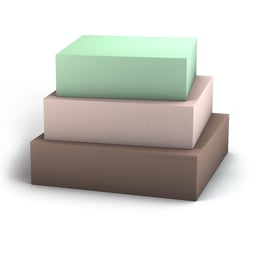
Next in our lineup of thermal break material is Fabreeka-TIM® RF. A high-density, closed-cell rigid polyurethane foam, Fabreeka-TIM RF is often used as an effective thermal bridging solution for a variety of applications. Unlike its fiberglass counterpart, the RF material is manufactured in several different densities to suit the conditions you design for.
Impermeable by any type of liquid, including water and most solvents, Fabreeka-TIM RF is the best thermal break material for severe weather conditions and harsh environments. This incredibly resilient material is resistant to mechanical stress along with its insulation properties. Therefore, Fabreeka-TIM RF is ideal for non-moment building envelope connections and cold storage applications.
***
Whether building professionals are striving for LEED certification, or are simply adhering to greener energy standards, Fabreeka has the best structural thermal break material to accomplish your goals. Trusted by professionals across building and construction, Fabreeka-TIM and Fabreeka-TIM RF set the benchmark for the industry.
Moreover, our dedicated and talented team of engineers works directly with you to develop the best solution using our thermal break material.
Get in touch with our team today to discover how we can work together to design greener, sustainable buildings.


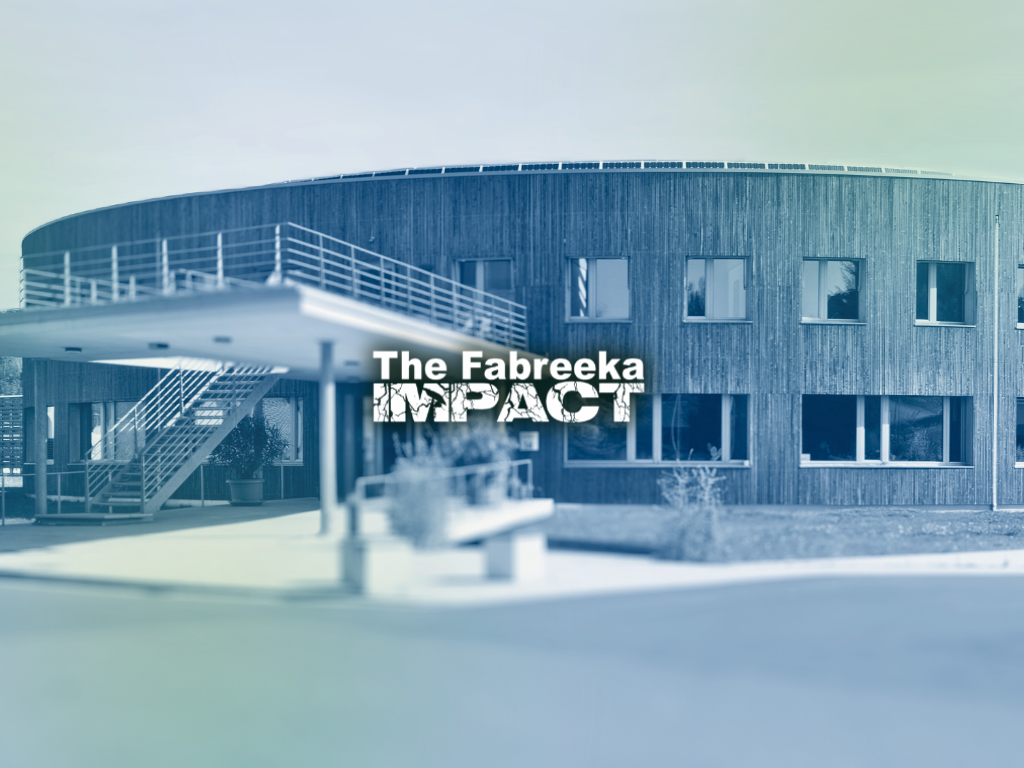

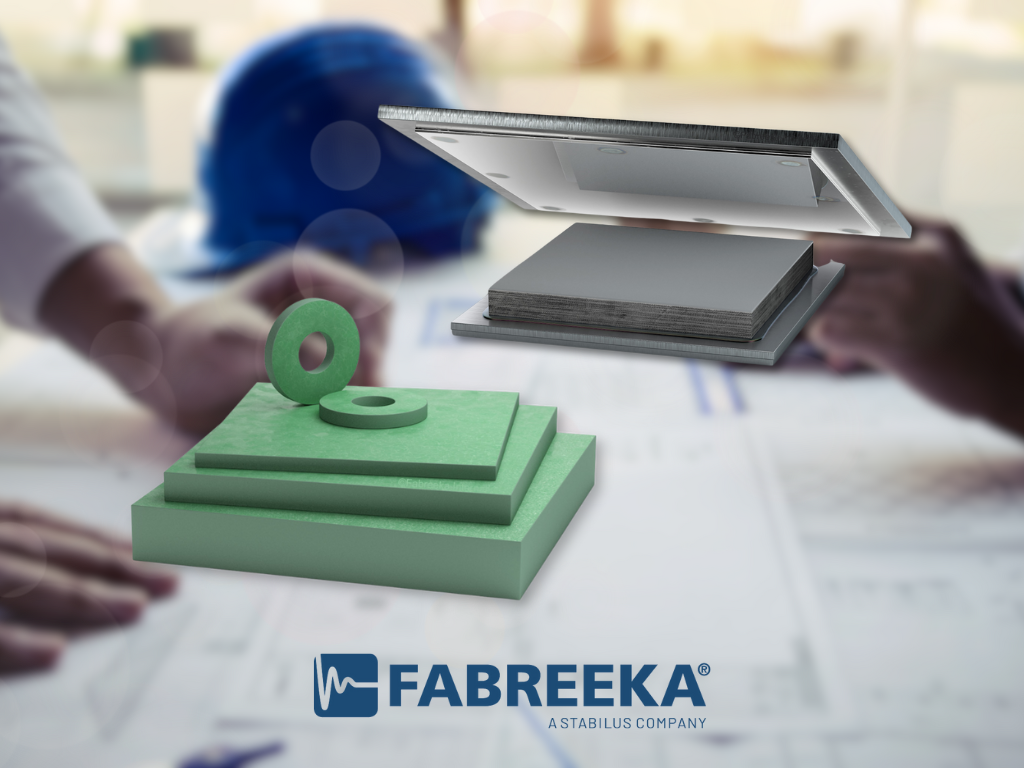
SUBMIT YOUR COMMENT